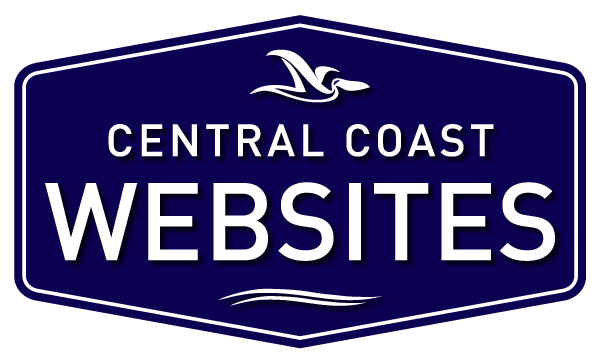The Benefits of a Sitemap.
A sitemap is an essential tool for any website. Think of it as a roadmap that outlines all the pages on your site and how they connect with one another. It helps both users and search engines navigate through your website efficiently, making sure that all important content is accessible.
But not all sitemaps are created the same. There are two main types of sitemaps: XML and HTML, each with its own purpose.
What is a Sitemap?
A sitemap is a structured list or map of all the web pages and content on a website. It shows how each page is linked together and is useful for guiding both users and search engine crawlers.
Types of Sitemaps.
There are two main types of sitemaps, each serving a specific purpose: XML sitemaps for search engines and HTML sitemaps for users.
XML Sitemaps.
An XML sitemap is designed to help search engines like Google efficiently find and index all the important pages on your website. Even if your internal linking isn’t perfect or your site is large with many pages, an XML sitemap ensures that nothing is missed.
Key benefits of XML sitemaps include:
- Improved Indexing: It helps search engines discover new or updated content faster, speeding up the process of getting your pages into search results.
- Complete Coverage: It ensures that all important pages, even those buried deep in the site structure, are indexed properly.
However, XML sitemaps are meant primarily for search engine bots and aren’t designed to be user-friendly.

HTML Sitemaps.
An HTML sitemap, on the other hand, is tailored for human visitors. It provides a clear overview of your site’s structure, with clickable links to key pages. This is particularly useful on larger websites where navigating through menus can be complex.
Benefits of HTML sitemaps include:
- Better User Experience: It allows users to find the pages they need quickly without navigating through multiple levels of your site.
- Indirect SEO Benefits: By improving site navigation, HTML sitemaps can encourage longer visits and reduce bounce rates, which may positively impact SEO.
Maintaining an up-to-date HTML sitemap can be challenging for very large sites, but it remains a valuable tool for improving user experience.
How to Create a Sitemap.
If you’re using WordPress, creating a sitemap is relatively straightforward. At Central Coast Websites, we always use WordPress, so here’s how you can create a sitemap for your site:
- Install a Sitemap Plugin: Plugins like Yoast SEO or Rank Math SEO are excellent options for generating sitemaps in WordPress. Install and activate your preferred plugin.
- Configure the Plugin: Most plugins offer an easy setup process through a ‘Setup Wizard.’ Configure the plugin to match your website’s content needs.
- Access Your Sitemap: Once the plugin is set up, it will automatically generate a sitemap for your website, typically found at yoursite.com/sitemap.xml. These plugins also update the sitemap automatically when new content is added.
Submitting Your Sitemap to Google.
Once your sitemap is created, it’s essential to submit it to search engines to ensure proper indexing. When you work with Central Coast Websites, we take care of this step for you. Once your site is live, we will submit your sitemap to Google, ensuring all your pages are indexed correctly from the start.
Here’s how sitemap submission works:
- Verify Your Website: Before submitting your sitemap, your website must be verified in Google Search Console. This gives you access to valuable tools and insights about your site.
- Go to the Sitemaps Page: In Google Search Console (or Bing Webmaster Tools), navigate to the Sitemaps section on the left-hand menu.
- Submit Your Sitemap URL: Enter the URL of your sitemap (usually yoursite.com/sitemap.xml) into the provided field, then click submit.
By ensuring your sitemap is submitted, search engines can start indexing your site right away, improving your chances of ranking sooner.
What Not to Include in Your Sitemap.
To make the most of your sitemap and ensure that search engines crawl your website efficiently, it’s important to exclude certain types of pages. By including only SEO-relevant pages, you can better utilise your website’s crawl budget, improving indexation and performance.
Here are some types of pages you should avoid including in your sitemap:
- Duplicate Pages: Pages that have identical or very similar content.
- Paginated Pages: Pagination links that break content across multiple pages.
- Non-Canonical Pages: Pages that are not the preferred version for search engines to index.
- Archive Pages: Often not relevant for search engines, but more useful for users.
- Redirected Pages (3xx), Missing Pages (4xx), and Error Pages (5xx): These won’t provide any SEO value and could waste crawl budget.
- Comment URLs: These are often dynamically generated and don’t contribute to SEO.
- No-Index Pages: Pages that you have intentionally set not to be indexed by search engines.
- Resource Pages: Pages that may be helpful to users, such as terms and conditions, but don’t serve as landing pages for SEO purposes.
- Site Search Results Pages: Internal search result pages don’t typically provide value for search engines.
- Shared via Email Pages: Pages designed solely for sharing content via email.
By keeping your sitemap clean and focused on SEO-relevant pages, you can help search engines navigate your site more efficiently, leading to better search engine performance.
Why Does a Sitemap Matter?
Sitemaps are vital for ensuring that both search engines and users can navigate your website effectively. For search engines, XML sitemaps make sure your pages are discovered and indexed properly. For users, an HTML sitemap helps them easily find content on your site, improving the overall user experience.
At Central Coast Websites, we make sure your site has a sitemap, set up and optimised for both users and search engines, helping your website perform at its best.




